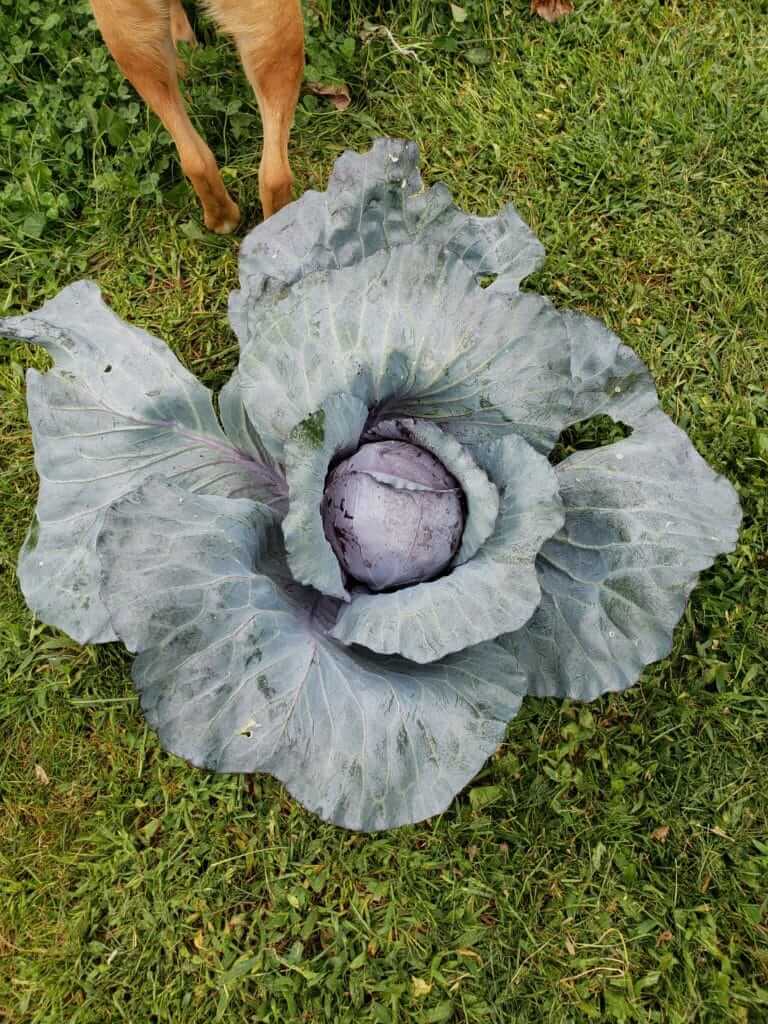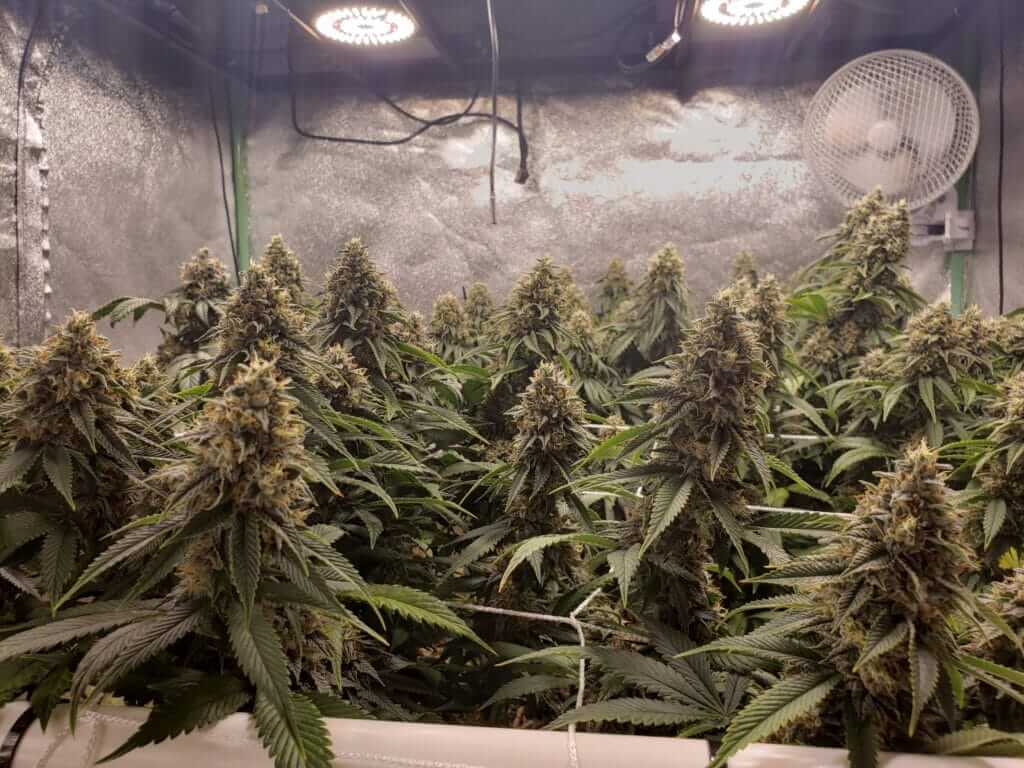After we introduced you to Wendy Kornberg from Sunnabis Farms and some basic terminology last week, we are continuing down the rabbit hole of learning about Korean Natural Farming (KNF). Today we bring you the back story on her partner and fiance James Beurer, how farming is the glue that holds their family life together and get a little bit more in the weeds about beginner KNF methods.
If you missed out on greens the first time around, you can find Wendy’s story HERE.
For over 5 years and more than 500 original articles, Beard Bros has always brought you the cannabis news you need, without all the fluff. We’re proud to present the Higher Learning series, where we partner with some of the best brands and brightest minds to give you expert insights and insider takes on all aspects of the industry!
A Modern Cannabis Love Story:
Korean Natural Farming, Solar Pumps, and Tractors
by James Beurer
Sometimes you stumble onto something that changes your entire life. Natural farming and the community around natural farming was that catalyst for me. It led to starting a group that has grown to almost 13,000 people on Facebook (Organic Cultivators), ending a decade-long relationship with a drug addict, moving across the country, and an engagement to the most amazing woman I’ve ever met.
I’ve been growing vegetables in my garden since I was 10, I am now 36. I started by putting my first garden right up against the back of my shed on the North Side, quite literally the worst spot for a garden in my small yard growing up in Michigan. In the beginning, I used Miracle-Gro on my plants because that’s what you did to get nice big plants, or at least that’s what I thought.

As time went on, I discovered cannabis and at 18 a friend gave me a book written by Ed Rosenthal and a small hydro system in a square pot with net baskets filled with hydroton (clay pebbles that wick water). I poured over the book and decided to take a crack at growing some cannabis for myself. I kit bashed the hydro kit and made an NFT (nutrient film technique) set up with the little aquarium pump that was included with the hydro kit gifted by my friend.
While it was a fun experience, it was illegal to grow, and living with family made it difficult to grow indoors. But I always had my vegetable garden. Over time I shifted away from things like Miracle-Gro as I observed the way nature worked. I started making small mesophilic compost piles that were mostly leaves and grass and the occasional box of waste from the local market. I made a conscious effort to gift the ground with a certain percentage of my fruits and at the end of the year, I chopped everything down and left it as mulch. When I started doing these things, I noticed changes in my garden. I found I watered less, my soil structure improved, there were fewer pests and pathogens, and I could hardly keep up with the growth in my small garden.

As the seasons went by and I continued to meander through life without much direction I eventually ended up in a relationship with a drug addict. Her addiction was not clear in the beginning and did not really surface until after we had our first child. Back then it was mostly alcohol but eventually grew into pills, crack, and heroin. I spent over 10 years in that relationship and ended up with 3 kids. While the relationship was winding down, Michigan legalized cannabis for recreational use. We had medical use for years, but I was always too consumed with my personal life to get a medical card, so I consumed illegally and never really grew much cannabis.
When the voters in Michigan voted to pass recreational use, the doors to growing legally without losing my children or going to jail were suddenly wide open! As I started accruing things like a tent and ventilation (I could not grow outside where I lived), I was also thinking about the materials for an NFT system, and the thought occurred to me that I might want to grow in soil instead. After all, I had been growing in soil for years outside in my garden. When I decided to grow in soil, I had the question “What soil is the best soil for cannabis?”, little did I know the search for the best soil would lead me to the practice of “no-till”, educate me on the soil food web, and eventually lead me to KNF aka Korean Natural Farming.

When I started my soil journey and learned about “no-till” I stumbled onto a guy named Joshua Steensland. I liked his “do less” methodology and he talked about soil microbes and how he built soil for his large indoor beds. During one of his no-till talks, he answered a question about KNF, which led me to Eric “Drake” Weinert and Chris Trump of Hawaii. They have some great videos to start you down the long rabbit hole that natural farming is. Although, I found taking an in-person class from a qualified instructor to be the most informative way to learn as the videos lack the ability to smell and taste the inputs. Yes, we eat our fertilizer!
As I started my Korean Natural Farming journey I was invited to groups on Facebook, and I joined several KNF groups. I noticed the same names answering questions and saw that you could talk and connect with some of the leading minds in the space, so I decided to start my own group. It started as a Michigan group to connect with the growers there and start making our voice one that people would have to listen to. It quickly grew into something that people outside Michigan were interested in joining and we opened it up to everyone.
It was at this point I started to approach people to help me in the group to hold a high standard of information and more importantly, debate. I can’t even begin to tell you how this simple action completely changed my life. As the group grew, I invited the admins to a group chat to discuss rules and moderator actions. As time went on many of us became friends, I count many of them to be some of the best friends I have, and many of them have taken part in my biggest accomplishments to date.
Ultimately, they helped me end a rotten relationship, find a new purpose in life, and the most important thing of all, I met my fiancé, Wendy Kornberg.
Follow us through the weeks as we walk you through our story and some of the KNF inputs and methodologies we utilize on our farm! A giant thanks to the Beard Bros for inviting us to share our story!
Introduction to Fermented Plant Juice
Even though IMO (indigenous micro-organisms) is 85% of what makes the Korean Natural Farming system work so beautifully, people usually tackle making an FPJ first. The reason why FPJ is done first, the most often, is because it is the easiest input to make with minimal preparation. That being said, FPJ is NOT to be used alone and is meant to be used with BRV (brown rice vinegar) and OHN (oriental herbal nutrient). Those 3 inputs create the “base solution” often referred to as maintenance spray or seed treatment as it is used for both, a weekly maintenance spray and seed soak solution for germinating seeds.
We are going to cover FPJ in this edition of Higher Learning just to get the juices flowing, pun intended. We will also be mentioning FFJ in this article as the preparation of FFJ and FPJ are the same with a few important nuances. FFJ is used much less than FPJ so we will be gearing towards FPJ. You can find this recipe along with others, complete with videos at Organic Cultivators.
First, let’s dispel some myths and bad practices that are seen often. Molasses is NEVER used in KNF preparations, no matter what any YouTube video tells you. We use sugar for its ability to create osmotic pressure, thereby pulling water through the cell membranes carrying “the good stuff” like hormones, enzymes, and micronized nutrients. The sugar also feeds the microbes on the leaf material, more on this in a bit.
We do not use the whole plant when we are making FPJ. It is often asserted that you should use the part of the plant you want to create growth with, roots for roots, fruits for fruits, etc. Really what you want are growth tips, that is where the most growth hormones are concentrated. If what we are after is the hormones, enzymes, and micronized nutrients, both the root growth tips and shoot growth tips are full of all three. But roots are covered in soil, full of life that can cause the ferment to go badly. We want our vessels and everything we are using to be as clean as possible and the only microbes we want are the ones on the plant material we are collecting.
We want to collect our material in the early morning, ideally before the sun hits the leaf. We are taking care to do this so we collect our material with the highest concentration of microbes. The microbes that live on and in the leaf-like living on our plant and we need them to help make our FPJ. The limited fermentation that takes place during making the FPJ helps to break down our material to release whatever “goodies” weren’t pulled out by our sugar.
After a week we will strain the material from the liquid to halt fermentation and store it for use. If we let fermentation continue the microbes would continue their work and turn our FPJ into alcohol far before the 6-month mark. The discussion on FPJ alone could go on for hours and often does in our Clubhouse chats and on Facebook.
Okay, let’s get our materials together. You will need the following.
- Fresh growing plants or green unripe fruit
- Sugar
- Mixing container
- Scale
- Storage container with a breathable lid
Step 1: Cut the growing tips of ONE species of plant or unripe fruit early in the morning, ideally before the sun has hit the material and is still covered in dew. This is to collect our material at peak microbial activity. Do not use plant material that is dirty, contaminated with debris, diseased, or sprayed with pesticides or fungicides. You should wait at least 24 hours after rainfall to collect.
Step 2: Cut plant material into roughly half-inch-sized pieces and weigh all your material.
Step 3: Add an equal weight of raw sugar or brown sugar and massage gently, ensuring all plant material is coated with sugar.
Step 4: Transfer the mixture to a container that will be 2/3 full after you add the material. So, your FPJ should fill the fermentation container to the 2/3 mark. Add a sugar cap that covers the surface of the material ½ thick and cover with a breathable lid, such as a paper towel or cotton cloth. Label and date container.
Step 5: After 7-10 days have passed strain the liquid from the solids through a paint strainer bag, loose cheesecloth, or old t-shirt. Ensure that all solids have been removed from the liquid for shelf stability. Store with a breathable lid in a cool, dark, dry space. Use within 6 months.
Pretty simple and a lot of fun. Bonus, depending on what plant you made your FPJ from, you may just have a super tasty addition to happy hour drinks! Even though the process is simple there is a ton of nuance with Korean Natural Farming, and it functions best when used properly as a system. Tasting and smelling some of the more complicated inputs are extremely valuable to lessen the learning curve and an in-person class with qualified and certified instructors is highly recommended if you don’t have years to dabble. Learn from their mistakes!
If you want to get your hands dirty on the farm with Wendy and James and learn the ins and outs of KNF farming first hand, REGISTER for their 5-Day Korean Natural Farming Hike, led by Wendy Kornberg and Koby Guye in Humboldt County, California from June 25-30, 2022. Make sure to tell them Beard Bros sent you!

















